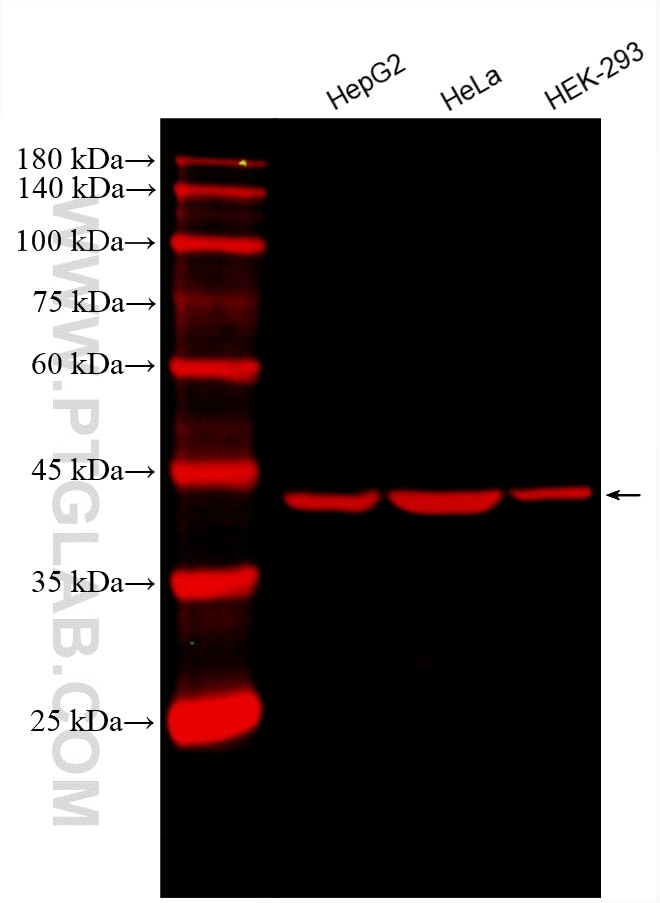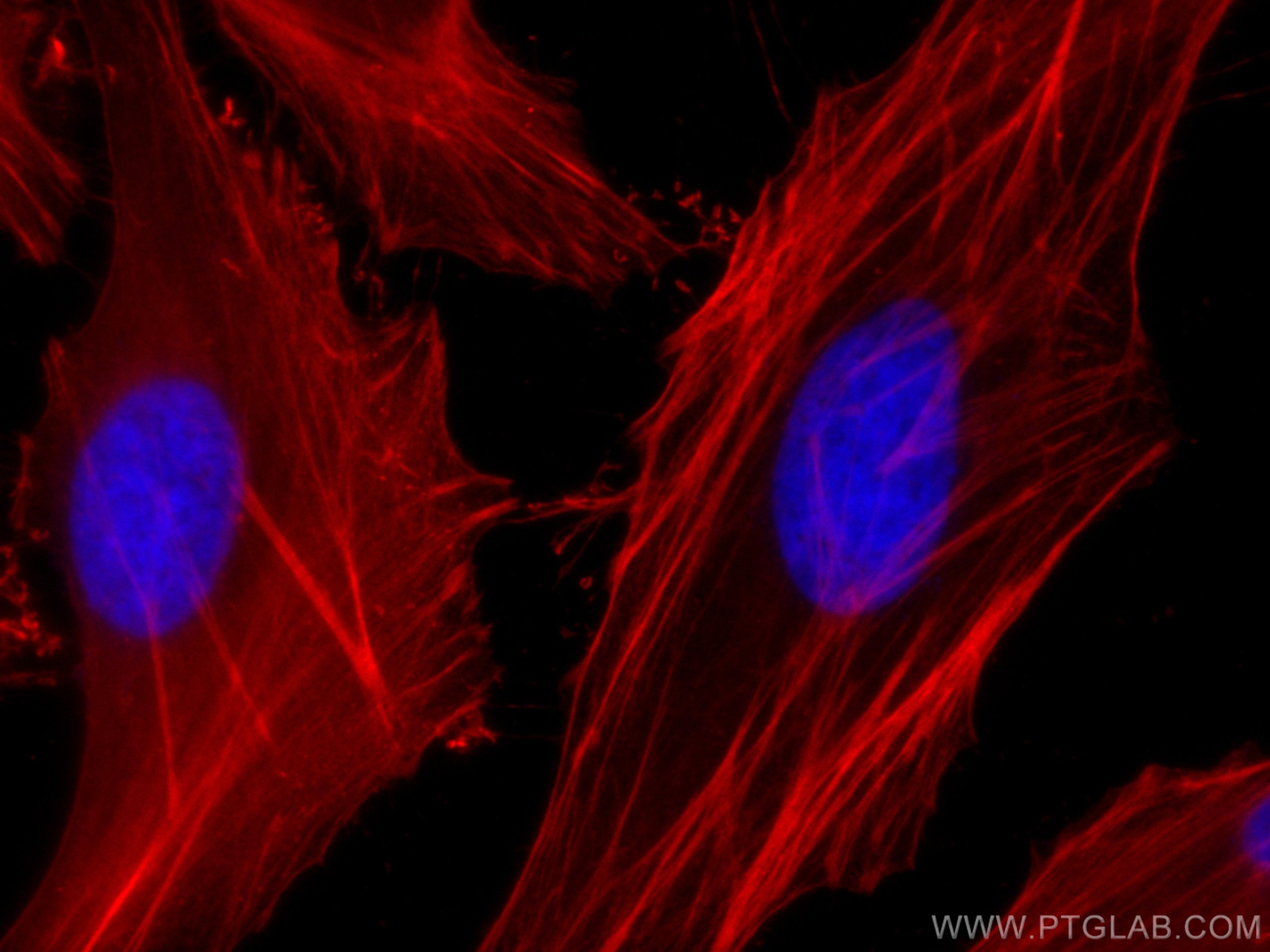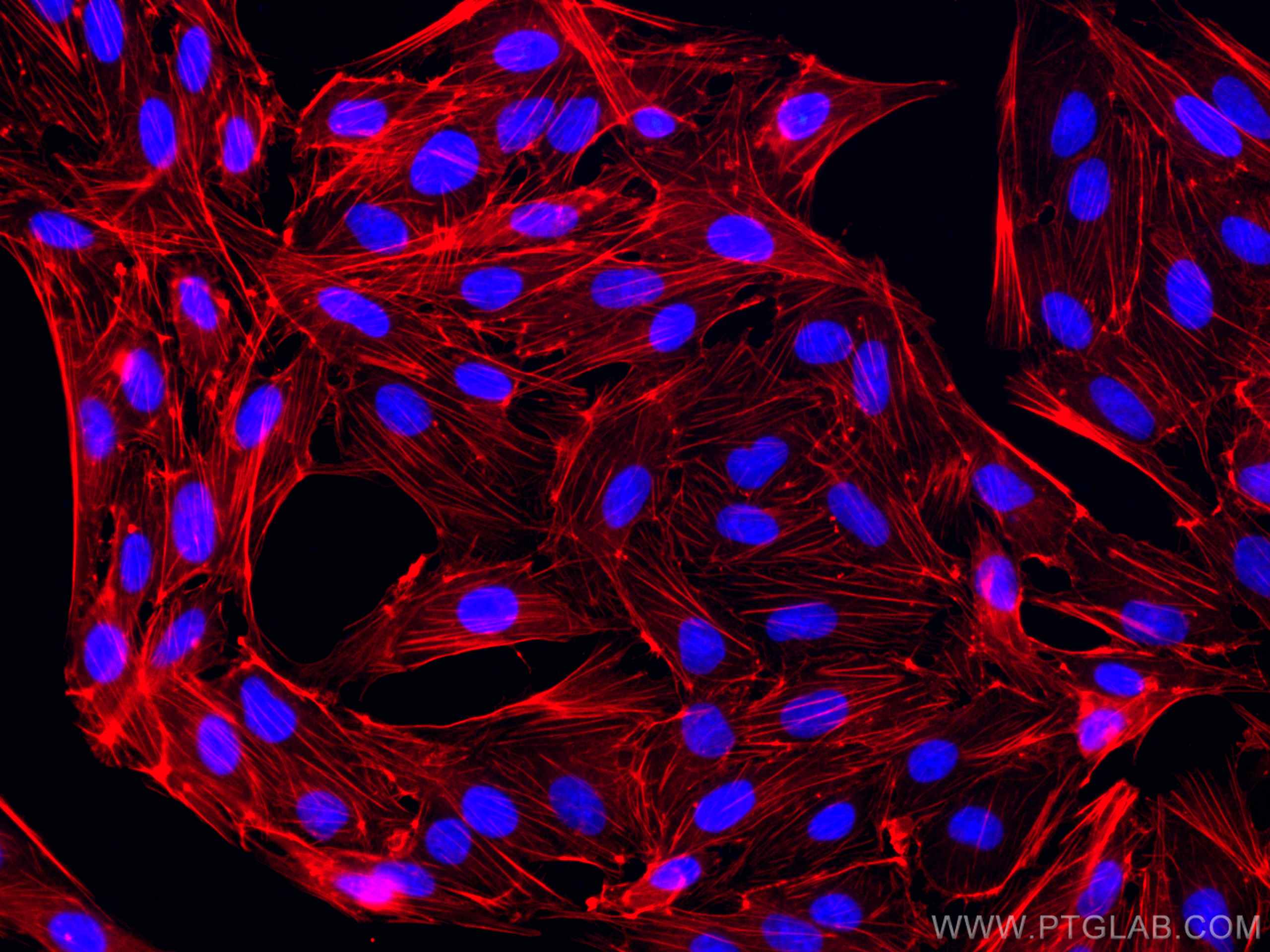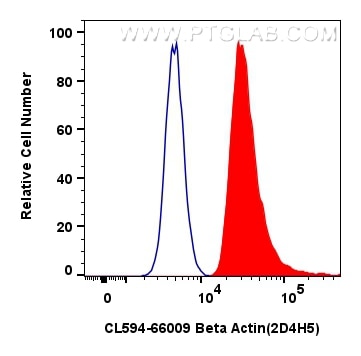Tested Applications
| Positive WB detected in | HepG2 cells, HeLa cells, HEK-293 cells |
| Positive IF/ICC detected in | MDCK cells, HepG2 cells |
| Positive FC (Intra) detected in | HeLa cells |
Recommended dilution
| Application | Dilution |
|---|---|
| Western Blot (WB) | WB : 1:500-1:2000 |
| Immunofluorescence (IF)/ICC | IF/ICC : 1:50-1:500 |
| Flow Cytometry (FC) (INTRA) | FC (INTRA) : 0.80 ug per 10^6 cells in a 100 µl suspension |
| It is recommended that this reagent should be titrated in each testing system to obtain optimal results. | |
| Sample-dependent, Check data in validation data gallery. | |
Published Applications
| WB | See 22 publications below |
| IF | See 2 publications below |
Product Information
CL594-66009 targets Beta Actin in WB, IF/ICC, FC (Intra) applications and shows reactivity with human, mouse, rat, canine, monkey, zebrafish, hamster samples.
| Tested Reactivity | human, mouse, rat, canine, monkey, zebrafish, hamster |
| Cited Reactivity | human, mouse, rat, pig, chicken |
| Host / Isotype | Mouse / IgG2b |
| Class | Monoclonal |
| Type | Antibody |
| Immunogen |
Recombinant protein Predict reactive species |
| Full Name | actin, beta |
| Calculated Molecular Weight | 42 kDa |
| Observed Molecular Weight | 42 kDa |
| GenBank Accession Number | NM_001101 |
| Gene Symbol | Beta Actin |
| Gene ID (NCBI) | 60 |
| RRID | AB_2883475 |
| Conjugate | CoraLite®594 Fluorescent Dye |
| Excitation/Emission Maxima Wavelengths | 588 nm / 604 nm |
| Form | Liquid |
| Purification Method | Protein A purification |
| UNIPROT ID | P60709 |
| Storage Buffer | PBS with 50% glycerol, 0.05% Proclin300, 0.5% BSA, pH 7.3. |
| Storage Conditions | Store at -20°C. Avoid exposure to light. Stable for one year after shipment. Aliquoting is unnecessary for -20oC storage. |
Background Information
Actins are highly conserved globular proteins that are involved in various types of cell motility and are ubiquitously expressed in all eukaryotic cells. At least six isoforms of actins are known in mammals and other vertebrates: alpha (ACTC1, cardiac muscle 1), alpha 1 (ACTA1, skeletal muscle) and 2 (ACTA2, aortic smooth muscle), beta (ACTB), gamma 1 (ACTG1) and 2 (ACTG2, enteric smooth muscle). Beta and gamma 1 are two non-muscle actin proteins. Most actins consist of 376aa, while ACTG2 (rich in muscles) has 375aa and ACTG1(found in non-muscle cells) has only 374aa. Beta actin has been widely used as the internal control in RT-PCR and Western Blotting as a 42-kDa protein. However, the 41 kDa cleaved fragment of beta actin can be generated during apoptosis process.This antibody can recognize all the actins. The isotype of this antibody is IgG2b. And the anitbody is CL594(Ex/Em 593 nm/614 nm) conjugated.
Protocols
| Product Specific Protocols | |
|---|---|
| FC protocol for CL594 Beta Actin antibody CL594-66009 | Download protocol |
| IF protocol for CL594 Beta Actin antibody CL594-66009 | Download protocol |
| WB protocol for CL594 Beta Actin antibody CL594-66009 | Download protocol |
| Standard Protocols | |
|---|---|
| Click here to view our Standard Protocols |
Publications
| Species | Application | Title |
|---|---|---|
Protein Cell The chemical reprogramming of unipotent adult germ cells towards authentic pluripotency and de novo establishment of imprinting | ||
J Clin Invest Sec13 promotes oligodendrocyte differentiation and myelin repair through autocrine pleiotrophin signaling. | ||
Hypertens Res Unilateral chemical ablation of the adrenal gland lowers blood pressure and alleviates target organ damage in spontaneously hypertensive rats | ||
Inflammation Ursolic Acid Promotes Autophagy by Inhibiting Akt/mTOR and TNF-α/TNFR1 Signaling Pathways to Alleviate Pyroptosis and Necroptosis in Mycobacterium tuberculosis-Infected Macrophages | ||
Neurochem Res Akt/mTOR Pathway Agonist SC79 Inhibits Autophagy and Apoptosis of Oligodendrocyte Precursor Cells Associated with Neonatal White Matter Dysplasia | ||
J Virol The S273R protein of African swine fever virus antagonizes the canonical NF-κB signaling pathway by IκBα |










